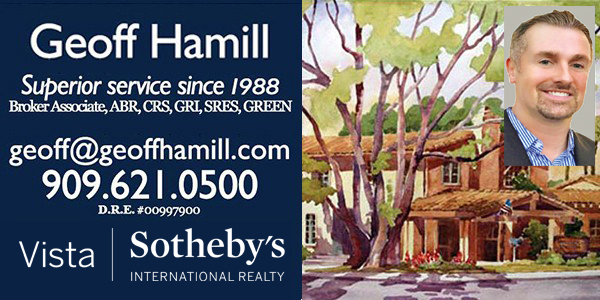Claremonters remember
Dear editor:
Steven Felschundneff’s recent article documented what Claremont dealt with in the Grand Prix Fire.
How can we better protect ourselves from wildfire given the increasing fire hazard due to climate change? Much of northern Claremont is within the FHSZ (Fire Hazard Safety Zone) Red Area. This includes Palmer Canyon, Padua Hills, Claraboya and Mills Avenue.
We need to protect homes in the Red Fire Zone. State Farm and other insurance companies are reassessing the risks. Homes need tile and metal roofs and window shutters for shading and fire emergencies. Earth sheltering could also be beneficial.
We need to protect the Claremont Wilderness Park and surrounding national forests that enhance the capacity of our airshed to keep air clean.
How can we accomplish this?
We should regularly monitor clean air using IQAir software, which I wrote about in the Claremont Courier June 16th Viewpoint article. It is also possible to monitor wildfires with information monitoring systems, air quality sensors and drones.
Working with monitoring stations in the Claremont Wilderness Park we should monitor air quality and wildfires … alerting people to current conditions.
We should develop alert systems, better than old fire towers, working with community volunteers who might use information systems involving community groups.
Funding is available to deal with wildfire and clean air monitoring. We will increasingly rely on people using online apps to help monitor health and safety in this time of climate change.
Mark von Wodtke, FASLA
Professor Emeritus of Landscape Architecture Cal Poly Pomona
Open to all
Dear editor:
We would like to agree with a number of the points made by Bob Gerecke in his letter to the Courier about keeping our city meetings open to all.
Those who cannot attend in person for one reason or another should not be prevented from having their voices heard at a meeting. If remote speakers are restricted to telephone calls enabled by staff, the anonymity of remote speaking would be reduced and callers could be cut off for any behavior that would not be tolerated in person.
Letters sent in should be read into the minutes so that those there in person or listening on Zoom can know what members of the public have said. Cutting off reading of these letters at three minutes just as is done for in-person speakers would be fair (although the four-minute limit worked for decades).
In the interest of shortening meetings, maybe the members of the council could restrict themselves to three minutes at a time when they speak. Limiting the time should encourage everyone to speak more concisely and to the point during deliberations, and would result in more time for the public to be heard without making meetings excessively long.
Susan Schenk and Richard Rosenbluth
A copy of this letter was also addressed to Claremont City Council members.
Jed Leano’s Assembly run
Dear editor:
There is a reason, floating around Claremont, for not voting for Jed Leano for our Assembly seat. While there are different versions of it, at bottom it is the thesis that he is using his council experience as a springboard to run for higher office and that, it is held, is a reason for not supporting him. That is a bad argument and completely misunderstands American political practice.
Our ladder of political ascent should be compared to playing professional baseball. An aspiring ball player may start out in Class A ball and if he does well there, will be promoted to higher levels if talent and opportunity are sufficient, perhaps making it all the way to the Major Leagues. No one begrudges a successful Class A player from moving up, players with accomplishments are expected to leave their first stop.
That is also the normal progression in politics. Start at some low level in the hierarchy of government, learn how to legislate, how to campaign, make connections, etc. If that all works out, and opportunity presents itself, run for a higher office, and if successful there, try to move up again.
Leano has spent his equivalent of Class A ball on the Claremont City Council, has found that he is quite capable there and has earned support for that success to try for the next level of government.
What the critics need to do is look upon his years here as having made a contribution to the well-being of Claremont and wish him well if his talents take him up to a new level of elected responsibility. We might even become proud that he began his career here.
Merrill Ring
Claremont
Much-needed housing?
Dear editor:
I see the “Like a Rock” church property has sold to a developer, ostensibly to build much-needed high density housing. Other locations in Claremont, and across the Southland are scheduled for the same. I have a question: With all the folks leaving California, why all the new housing?
I’m guessing there are other reasons that are not being mentioned, that are driving the furious development, money being the motivating force. The developers and the construction companies are sure to make out under these projects, as well as the municipalities and the state. Property taxes will increase greatly. The corporate landlords will do nicely as well.
Will the new housing be affordable? I doubt it.
Paul Ochsner
Claremont



